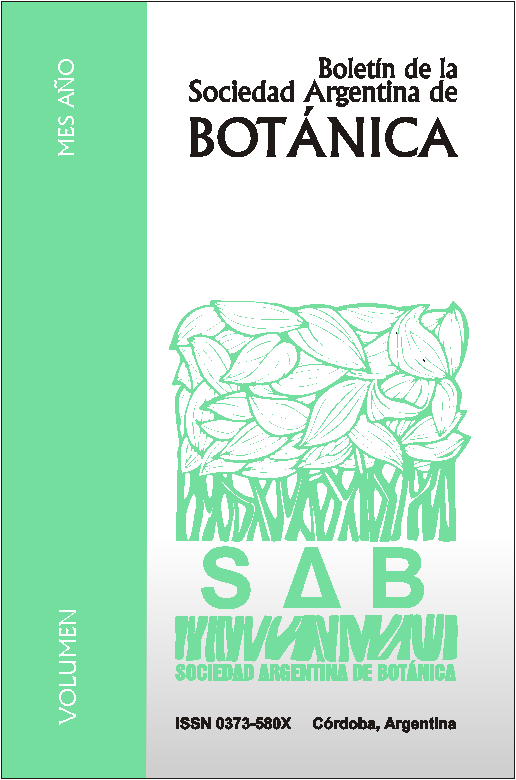Vegetation of carbonate outcrops in mountains of central Argentina.
DOI:
https://doi.org/10.31055/1851.2372.v49.n4.9897Keywords:
Carbonate outcrops, altitude, geochemistry, floristic composition.Abstract
Vegetation of carbonate outcrops in mountains of central Argentina. In mountains of Central Argentina, which have severe fragmentation and replacement of natural vegetation, rocky outcrops are important habitats for biodiversity conservation, as refuges for endemic and rare species. In this paper,we explore the local compositional variation of vegetation in calcium and dolomitic outcrops of Sierras deCórdoba and compare associations between different geochemical types and floristic composition alonga local altitudinal gradient. Four adjacent outcrops of different geochemical types located in different positions in a local elevation gradient from 1000 to 1800 m.a.s.l. were selected and cover-abundance ofall vascular plants at 216 rélevés, was estimated. Significative differences of compositional vegetation attributes occurred between the different lithologies and altitudinal strata. At the local scale, the floristic composition appeared related to the geochemical typology of outcrops and this pattern is overlapped with altitude. It was possible to establish relationships between the presence of different vascular plants and different types of calcitic and dolomitic rocks, independently of their position in the altitudinal gradient.The importance of these variables in structuring the habitat and filtering of species is confirmed, and itsimportance in looking for priorities in conservation of these singular habitats.Downloads
Downloads
How to Cite
Issue
Section
License
Provides immediate and free OPEN ACCESS to its content under the principle of making research freely available to the public, which fosters a greater exchange of global knowledge, allowing authors to maintain their copyright without restrictions.
Material published in Bol. Soc. Argent. Bot. is distributed under a Creative Commons Attribution-NonCommercial-ShareAlike 4.0 International license.









